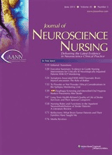
JOURNAL OF NEUROSCIENCE NURSING
Scope & Guideline
Advancing the Future of Neuroscience Nursing
Introduction
Aims and Scopes
- Neuroscience Nursing Practice:
The journal emphasizes the importance of specialized nursing care for patients with neurological conditions, including stroke, traumatic brain injuries, and neurodegenerative diseases. It seeks to enhance the quality of care through innovative practices and protocols. - Interdisciplinary Collaboration:
Many papers advocate for a multidisciplinary approach in managing neurological patients, highlighting the collaboration between nurses, physicians, therapists, and other healthcare professionals. - Research and Evidence-Based Practice:
The journal encourages rigorous research methodologies and the application of evidence-based practices to improve patient outcomes in neuroscience nursing. - Patient and Caregiver Education:
Educational initiatives aimed at patients and caregivers are a core focus, ensuring that they are well-informed about their conditions and care processes. - Delirium and Cognitive Function:
Recent studies have increasingly focused on delirium, cognitive assessments, and their implications for nursing practice in critical care settings. - Quality Improvement in Care:
The journal supports continuous quality improvement initiatives within neuroscience nursing, aiming to enhance operational efficiency and patient safety.
Trending and Emerging
- Telemedicine and Remote Care:
The increasing incorporation of telemedicine in neurological care has been a significant trend, particularly following the COVID-19 pandemic, which has prompted innovative approaches to patient monitoring and treatment. - Mental Health and Neurological Disorders:
There is a growing emphasis on the intersection of mental health and neurological disorders, with studies exploring the psychological impact of conditions such as stroke and traumatic brain injury. - Simulation-Based Education:
The use of simulation in nursing education is trending, with research showcasing its effectiveness in preparing nurses for real-world scenarios in neuroscience care. - Interprofessional Education and Practice:
An emerging theme is the focus on interprofessional education, which prepares nursing professionals to work collaboratively with other healthcare disciplines, enhancing patient care outcomes. - Patient-Centered Care Models:
The shift towards patient-centered care models is gaining traction, focusing on personalized treatment plans that consider the unique needs of each patient.
Declining or Waning
- Traditional Stroke Protocols:
The focus on traditional stroke management protocols has decreased, possibly due to the emergence of more innovative and comprehensive approaches to stroke care, such as telemedicine and patient-centered care models. - Basic Nursing Skills:
Papers that emphasize basic nursing skills in neuroscience have become less frequent, as the field shifts towards more advanced practices and technologies in patient care. - Generalized Pain Management:
The discussion surrounding generalized pain management in neurological patients has waned, with a shift towards more specific studies on pain management tailored to individual neurological conditions. - Single-Disease Focus:
Research concentrating solely on single neurological diseases (like stroke or Alzheimer's) is becoming less common, with a trend towards integrated studies that address multiple conditions or comorbidities.
Similar Journals
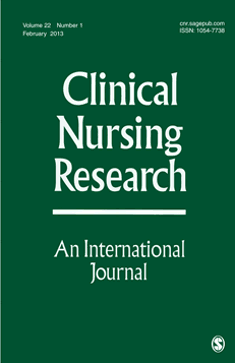
Clinical Nursing Research
Fostering innovation in nursing scholarship since 1992.Clinical Nursing Research is a premier academic journal dedicated to advancing the discipline of nursing through rigorous research and evidence-based practice. Published by SAGE Publications Inc, this journal has been a cornerstone in the field since its inception in 1992, with a commitment to providing high-quality research that informs clinical practice and nursing education. With an impressive Scopus ranking of #40 out of 139 in the general nursing category and a percentile rank of 71, it represents a significant contribution to the nursing literature. Although not an open-access journal, Clinical Nursing Research facilitates access through institutional subscriptions, ensuring that critical findings are disseminated widely. The journal’s objectives include fostering innovation and promoting best practices in nursing, making it an indispensable resource for researchers, practitioners, and students alike. As it continues to evolve through 2024 and beyond, Clinical Nursing Research remains at the forefront of nursing scholarship, addressing the complexities of healthcare in a rapidly changing world.
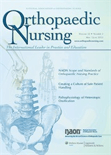
Orthopaedic Nursing
Advancing Orthopaedic Care Through KnowledgeOrthopaedic Nursing, published by Lippincott Williams & Wilkins, is a vital journal dedicated to advancing the knowledge and practice of orthopaedic nursing. With its ISSN 0744-6020 and E-ISSN 1542-538X, this journal has been a cornerstone in the field since its inception in 1981 and continues to disseminate groundbreaking research and critical insights through to 2024. The journal is categorized in the third and fourth quartiles across various nursing and medical disciplines, reflecting its niche but impactful presence within the realms of Advanced and Specialized Nursing, Medicine (miscellaneous), and Orthopedics and Sports Medicine. Although it operates under a traditional access model, the importance of its articles—addressing both theoretical and practical aspects of orthopaedic care—cannot be overstated. Researchers, practitioners, and students alike will find Orthopaedic Nursing an indispensable resource for enhancing their understanding of contemporary practices and the evolving landscape of patient care in orthopaedics.
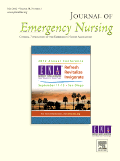
Journal of Emergency Nursing
Shaping Tomorrow's Emergency Care TodayJournal of Emergency Nursing, published by Elsevier Science Inc, serves as a premier platform for advancing the field of emergency nursing. Since its inception in 1975, this peer-reviewed journal has established itself as a vital resource for researchers, practitioners, and educators alike, with a notable impact factor and current ranking of #8 out of 32 in the Emergency Nursing category, placing it in the 76th percentile. The journal's commitment to the dissemination of high-quality evidence, innovative practices, and essential insights makes it an indispensable tool for those seeking to excel in acute care settings. Although not open access, the Journal of Emergency Nursing is dedicated to fostering knowledge and improving patient outcomes through robust research and comprehensive reviews, aligning closely with its mission to enhance emergency nursing practices and education through every issue until 2024 and beyond. For professionals and students keen on staying at the forefront of emergency care advancements, this journal provides a wealth of knowledge and resources, reflecting the critical issues and developments shaping the future of healthcare.
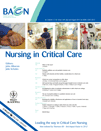
Nursing in Critical Care
Pioneering research that shapes the future of critical care nursing.Nursing in Critical Care is a premier journal dedicated to the advancement of knowledge and practice in the field of critical care nursing. Published by WILEY, this esteemed journal has established itself as a leader in the domain, holding a prestigious Q1 ranking in Critical Care Nursing as of 2023, and ranking as the 2nd out of 27 in its category according to Scopus, with an impressive 94th percentile. Since its inception in 1996, it has been an essential platform for disseminating cutting-edge research, evidence-based practices, and critical insights that directly impact patient outcomes in high-stakes environments. While not an Open Access journal, it offers accessible options for institutions and individuals dedicated to the continuous evolution of nursing practices in critical care settings. The journal promises to remain at the forefront of the discipline, providing invaluable resources for researchers, practitioners, and students alike who aspire to enhance their expertise and improve the standards of care within intensive health scenarios.

Recherche en Soins Infirmiers
Exploring the forefront of nursing research and practice.Recherche en Soins Infirmiers, published by the ASSOC RECHERCHE & SOINS INFIRMIERS in France, offers a vital platform for sharing innovative research and insights in the field of nursing care. With its ISSN 0297-2964 and E-ISSN 2271-8362, this journal serves as an essential resource for healthcare professionals, researchers, and students alike, striving to advance nursing practices and improve patient care. Although it currently holds a Q4 ranking in the 'Medicine (Miscellaneous)' category and occupies a position of rank #468 out of 636 in the Scopus General Medicine category, it is dedicated to fostering scholarly communication and collaboration. The journal's scope reflects a comprehensive approach to nursing theories, practices, and innovations from the years 1996 to 2022, with ongoing publications anticipated for 2024. Despite the absence of an open access model, the journal continues to publish works that address pressing healthcare challenges, thereby contributing significantly to the advancement of nursing as a discipline.
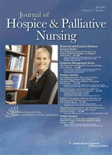
Journal of Hospice & Palliative Nursing
Empowering Care, Enhancing Lives.The Journal of Hospice & Palliative Nursing (ISSN: 1522-2179, E-ISSN: 1539-0705), published by Lippincott Williams & Wilkins, stands as a leading resource in the field of hospice and palliative care nursing. With an impressive impact factor and ranked in the Q1 quartile for Advanced and Specialized Nursing and Q2 quartile for Community and Home Care as of 2023, this journal serves as a critical platform for disseminating evidence-based practices and innovative research. It covers a broad spectrum of topics, aiming to improve patient experiences and enhance the quality of care for individuals with life-limiting conditions. Created to support healthcare professionals, researchers, and students in the United States and beyond, the journal invites contributions that stimulate scholarly dialogue and advance the practice of palliative nursing. With publication years converging from 1999 to 2024, it remains an invaluable asset to the nursing community, fostering advancements in this vital area of healthcare.
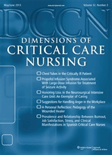
Dimensions of Critical Care Nursing
Navigating the Complexities of Critical Care Nursing TogetherDimensions of Critical Care Nursing, published by Lippincott Williams & Wilkins, is a premier journal dedicated to advancing the knowledge and practices within the fields of critical care and emergency nursing. With a distinguished history dating back to 1982, this journal plays a vital role in disseminating cutting-edge research, clinical advancements, and educational resources aimed at enhancing patient care in high-stakes environments. The journal is ranked in the Q2 quartile for both Critical Care Nursing and Emergency Nursing, reflecting its significant impact on the nursing field, with Scopus rankings placing it at #11 in Critical Care Nursing and #14 in Emergency Nursing. Targeting a multidisciplinary audience of researchers, clinicians, and students, the journal serves as a critical platform for discussions surrounding innovative patient care strategies, evidence-based practices, and emerging trends in critical nursing. Although it is not an open-access journal, it provides valuable insights that are essential for shaping the future of nursing practice. Stay informed on the latest research and contribute to the evolving landscape of critical and emergency care through Dimensions of Critical Care Nursing.
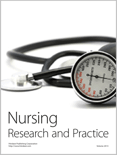
Nursing Research and Practice
Shaping the future of nursing through dedicated research.Nursing Research and Practice, an esteemed open-access journal published by HINDAWI LTD, serves as a vital resource in the field of nursing, providing a platform for the dissemination of innovative research and practice methodologies. With its ISSN 2090-1429 and E-ISSN 2090-1437, this journal has maintained a commendable presence in the academic community since its inception in 2010. Based in Egypt, it is positioned within the Q2 category of Nursing (miscellaneous) and ranks #47/139 in General Nursing according to Scopus, placing it in the 66th percentile. The journal is committed to advancing nursing science and facilitating an evidence-based approach to practice, encouraging contributions that explore the full spectrum of nursing discipline. As a vital reference for researchers, healthcare professionals, and students alike, Nursing Research and Practice not only keeps its audience informed but also promotes innovative practices to enhance patient care across diverse settings.
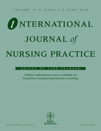
International Journal of Nursing Practice
Enriching global nursing discourse for better healthcare outcomes.International Journal of Nursing Practice, published by WILEY, is a premier academic journal dedicated to the field of nursing, with a keen emphasis on innovative nursing practices and advancements in healthcare. Established in 1995, the journal has successfully bridged a vital gap in nursing research and practice, featuring rigorous peer-reviewed articles that cater to both academic and clinical audiences. Rated as a Q1 journal in Nursing (miscellaneous) for 2023, it ranks at an impressive #29 out of 139 in General Nursing on Scopus, placing it firmly within the top 21% of its category. The journal serves as an essential resource for nursing professionals, researchers, and students alike, fostering evidence-based practices and enriching the global discourse in nursing. With an increasing focus on interdisciplinary work, the International Journal of Nursing Practice aims to enhance the quality of care provided to patients and support the continuous education of healthcare providers. Stay updated with cutting-edge research and share your contributions to this dynamic field!

Australian Journal of Advanced Nursing
Empowering Nurses Through Innovative ResearchThe Australian Journal of Advanced Nursing, published by the Australian Nursing Federation, has established itself as a vital resource in the fields of nursing and advanced nursing practice since its inception in 1983. With an ISSN of 0813-0531 and an E-ISSN of 1447-4328, this peer-reviewed journal aims to disseminate high-quality research, innovative practices, and critical reviews that contribute to the advancement of nursing knowledge and education. With a commendable impact factor and currently positioned in the Q2 quartile in both Advanced and Specialized Nursing and miscellaneous Nursing categories as of 2023, the journal is ranked among the top publications in the field, reflecting its significance and influence in shaping nursing practices and policies in Australia and beyond. The journal provides open access options for a wider readership while specializing in progressive topics that address contemporary challenges in nursing, thus serving researchers, practitioners, and educators alike. It continues to be a cornerstone for advancing the professional development of nursing disciplines, supporting a community that thrives on evidence-based practice and interdisciplinary collaboration.